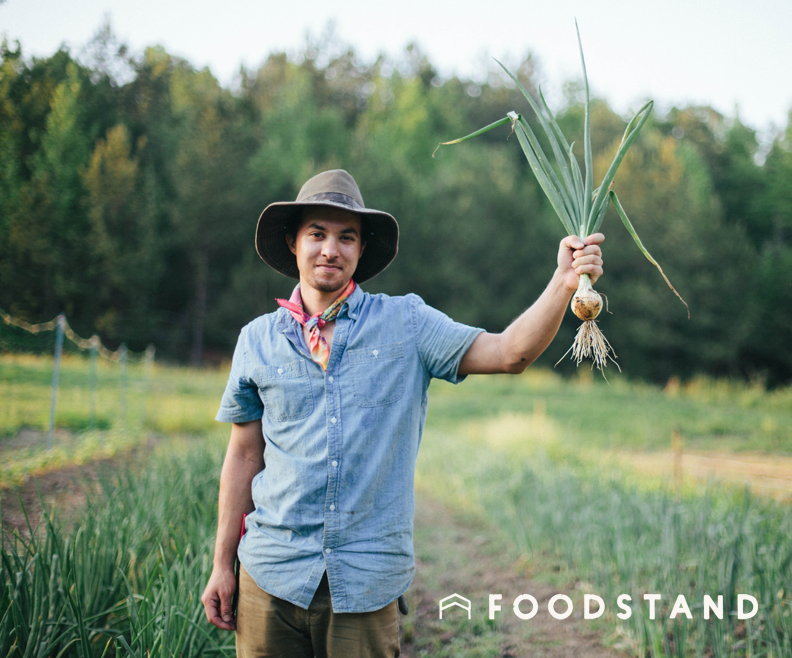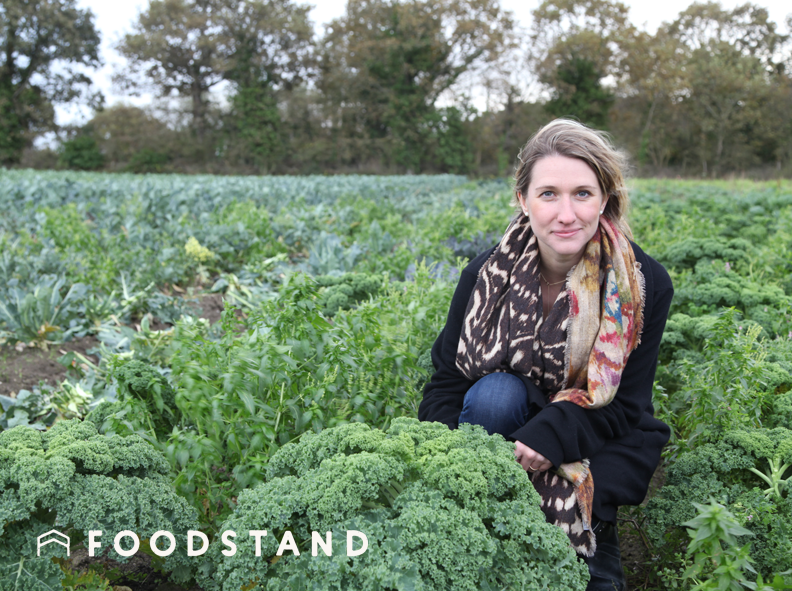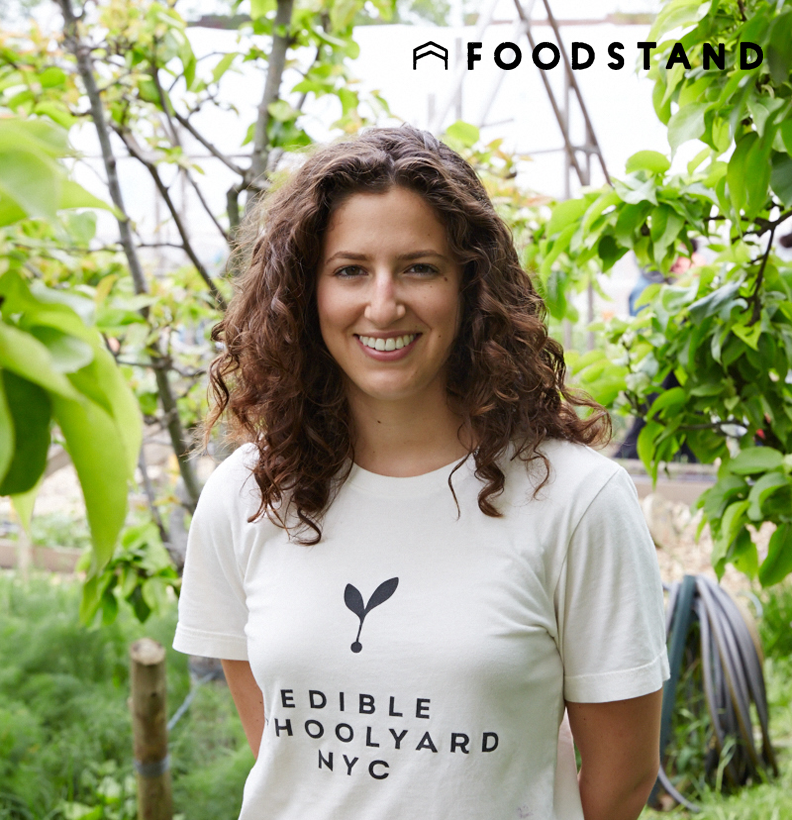
Photo credit: Justen Clay
Justin Aiello @olivettefarm is the Farm Manager at Olivette Farm, a biodiverse, organic vegetable farm located just north of downtown Asheville, North Carolina. His journey to farming has taken some twists and turns—from geography to landscaping, and from Georgia to the Adirondack Mountains of New York, and finally to North Carolina.
You have a B.S. in Geography—farming and geography are strongly linked, but what prompted you to become a farmer?
I believe there’s a strong and essential link that we as humans have with the land. As a result, I’ve also always loved working in the dirt. Studying geography provided me with insight into how we impact the land for better or worse. A few years back, I saw a documentary about young farmers called Grow and was so inspired that I quit my landscaping job to take on a farm apprenticeship. This career shift turned out to be the perfect combination of getting my hands dirty, growing beautiful and nutritious things, and doing my small part to heal the earth around me.
How do you define good food?
I define good food as food that is grown or produced in a way that highly values the land, the labor involved, and the people who will eventually eat it.
You farm organically at Olivette Farm. What are your personal beliefs about organic vs. conventional farming methods?
I believe that organic should be the only option—after all, it was the original way to farm! I think that farming using organic and sustainable methods ensures that we are harvesting clean, chemical-free and nutrient-dense food. It also means that we are good stewards of the land by improving our soil health, providing habitats for beneficial insects and animals, and not contributing to hazardous runoff into our local waterways.
Big Ag says that organic farms have less yield and incur problems with parasites etc., yet we also hear that this is untrue. What are the misconceptions around organic farming, and are there any growing difficulties you face because you farm organically?
Big Ag definitely does a lot of smooth-talking to make it seem like organic farming is not a viable solution to our food system needs. I think that lack of education on how food is grown and where food comes from causes a lot of people to think that we are unable to fight off disease or pests, and therefore have lower yields. The truth is that we generally have high yields and are able to use methods to control disease and pests—like crop rotation and cover cropping—that don’t involve the heavy utilization of chemicals. I think that everyone should spend at least one week on an organic farm in order to gain a better understanding of where their food comes from.
Please tell us about your CSA. Is this the best way for people to get your produce?
We grow over 60 different types of vegetables, herbs and microgreens at Olivette. Our CSA members get a weekly bag of seasonal vegetables for either 14 or 28 weeks throughout the season. The items in our CSA bags vary each week. I think our CSA is the best way to purchase our produce if you want to try everything that we have to offer, and also get outside of your comfort zone by trying new and unusual (but delicious) vegetables. We take our CSA members on a seasonal food journey along with the farm!
What’s the most rewarding aspect of your job?
Getting to interact with our customers and see them enjoy what we’ve grown is absolutely the most rewarding part of farming. Food has the special ability to break down barriers and to connect people from every walk of life and perspective! I love how farming is a community-oriented act.
What’s the most difficult aspect of your job?
I think one of the most difficult parts of farming is the long hours that I have to work. Farming is a never-ending job—there’s always a long list of things to be done, and we just decide to find stopping points at the end of each day. This is especially true during the summer. However, I have to say that all of the hard work and long hours are well worth it at the end of the day.
Food issues have barely made it into the race for President. If you could ask the future President to consider a food issue that needs to be addressed, what would it be?
I think one food issue that I would love to hear the candidates speak more about is food security. I mean this in a few ways—creating easier and more affordable access to fresh, nutritious food; increasing funding to help small farmers grow their operations; and inspiring new farmers who hope to begin farming. I lived in Atlanta for a few years prior to moving to Asheville, and food deserts are a huge problem in so many places around the city.
If you could get the general population to change one aspect of their eating habits, what would it be?
Ditch the processed foods! I think replacing processed foods with fresh, non-processed options can do wonders for the general health of our population.
You grow a wide variety of produce. What are your three favorites?
I love them all! However, if I have to pick three I would say: sugar snap peas in the spring, Sun Gold tomatoes in the summer, and nothing beats sweet baby carrots after the first fall frost!
And how do you eat or cook them?
I put pea shoots in just about anything—sandwiches, salads, tacos… I also lightly wilt them in a pan and add them to pasta. Sun Gold tomatoes are like candy, so you can often catch me in the field eating them raw, or if they make it home I’ll blister them and make a warm BLT or a sweet broth when I have time. You can also find me eating carrots in the field, but here is a recipe from a friend of ours for Roasted Carrots and Pesto Yogurt Sauce. It’s a favorite of mine.
We just completed our second #NoFoodWaste campaign in June. What are some #NoFoodWaste practices that you incorporate into the farm?
I love #NoFoodWaste! One of the biggest things I do on the farm is try to use any edible parts of the plant that we can—whether that means harvesting and cooking the broccoli greens off our broccoli plants, keeping the roots on our bunching onions, or keeping the greens on our carrots and encouraging our customers to make pesto with them. Any waste we do create from harvesting and processing our vegetables goes into our compost pile which returns to our fields to help build our soil and help grow more nutritious food for the next season.
WANT TO BE FEATURED ON BEHIND THE PLATE?
DOWNLOAD THE FOODSTAND APP!
Talk to us about microgreens.
Microgreens are very young mini-vegetables and herbs. Most microgreens are only 8 to 14 days old when they’re harvested. Microgreen options are almost endless, but some of the more popular varieties are radishes, kale, arugula, broccoli and cabbage. We grow our microgreens in trays inside of our greenhouse with our own special mix of soil. They may be small, but they pack huge flavor and are incredibly nutrient-dense. They can be used in salads, soups, pasta, sandwiches, smoothies or even be eaten by themselves.
What’s one of your first (and most memorable) interactions with food?
My first food memory is throwing a bowl of split pea soup at my grandmother (sorry Grandma)! But my most memorable food interaction has been eating arepas with my extended family. My mother is from Venezuela and every time we go visit her side of the family we eat some of the most amazing home-cooked meals. It’s the first time I can really remember trying something new and truly loving it. We were on a family vacation in Venezuela when I was just 11—we sat down for breakfast in my Uncle’s house and had fresh lime juice from the tree in the back yard, fresh fruit on the table from the local roadside stands, and arepas—a huge plate of them! They were unlike anything I’d ever tasted before. I can’t remember how many I ate that morning, but I can tell you that I ate a lot of them and was sure to ask for them every morning on that trip.
If you weren’t doing what you’re doing, what would you be doing?
If I wasn’t a farmer I think I would want to run an animal rescue organization. I absolutely love animals—we have two very spoiled dogs and love being with most any animal. I think rescuing animals is so important and not just for typical household pets. There are a lot of farm animals out there that have been abused and/or neglected that need good homes.
What’s always in your fridge? How do you use it?
A few things that are always in our fridge are pea shoots, a few bags of leftover greens from market, any of our root vegetables that are in season, blue cheese, and some local beer (because a farmer needs to relax)! Our pea shoots get thrown into just about everything, including all of the pasta that we make for dinner multiple times a week. We love to roast our root veggies at home and add whichever greens we have on hand. Lately, it has been roasted carrots in a warm kale salad.
Favorite breakfast to get you through a long day on the farm?
I’m constantly eating and snacking throughout the day, but my go-to breakfast as of late is a bowl of oats with nuts and fruit, and a green smoothie. That usually gets me through the first few hours of work.
Favorite meal?
Our favorite meal lately is French Onion Tart from blogger and cookbook author Mimi Thorisson.
Your good food wish?
My good food wish is for fresh, nutritious and affordable food to be made available to everyone, and for farmers to have greater support and access to land.


